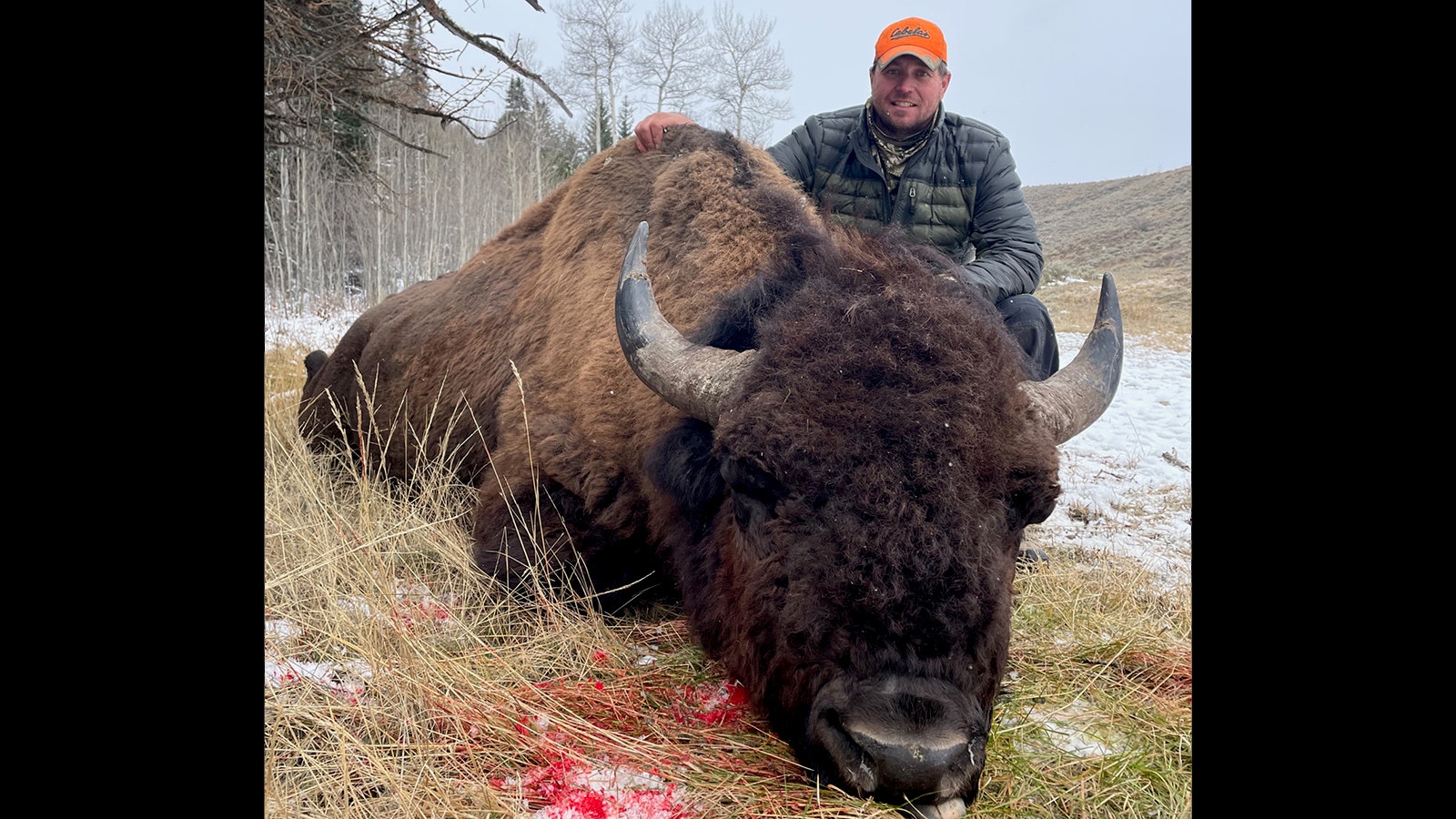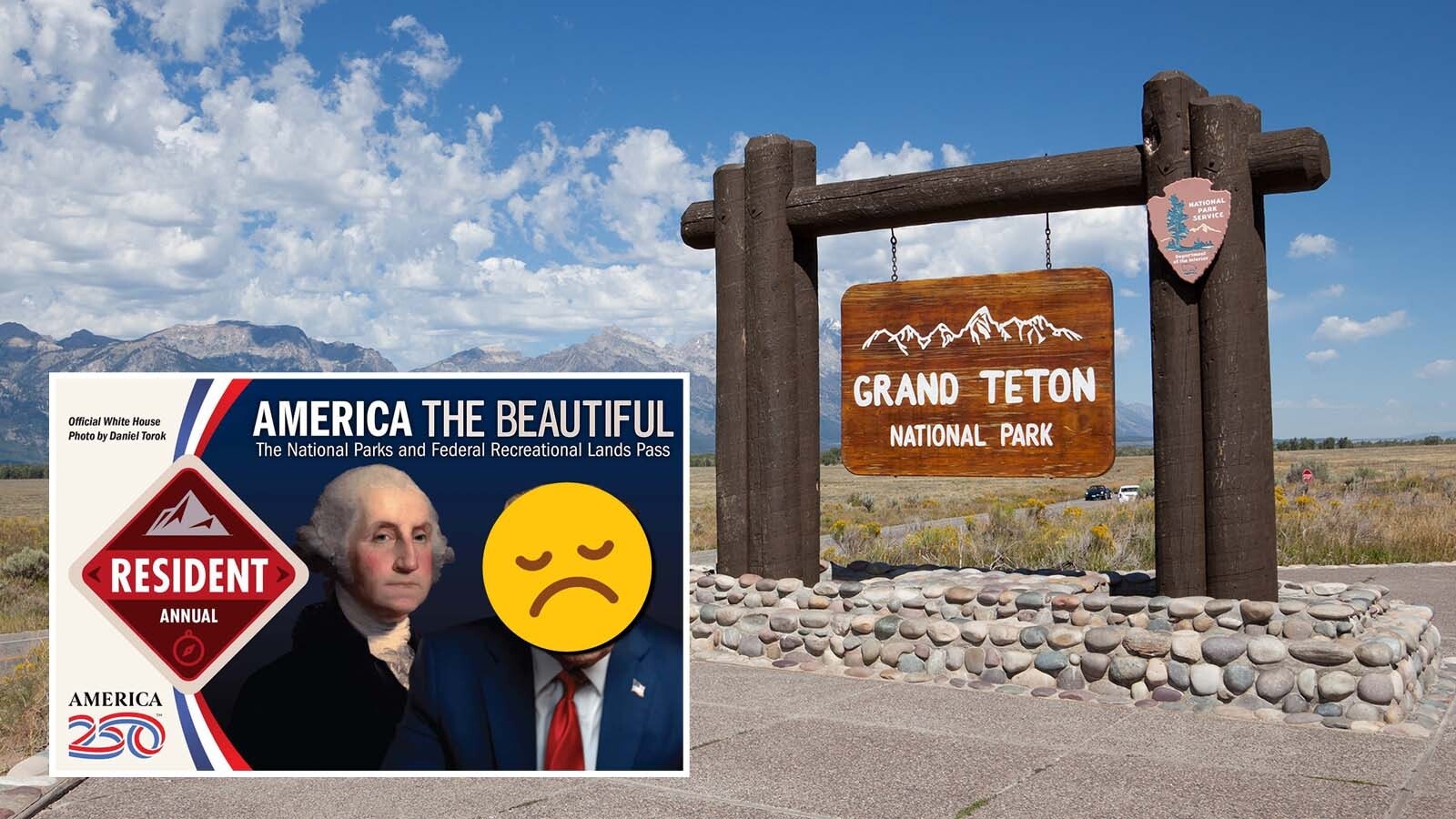Like many Wyoming big game hunters, Troy Jerup has bagged his share of elk, deer and other critters. But he wasn’t sure if he’d ever get to fulfill his dream of hunting wild, free-ranging bison.
Earlier this year, when the Wyoming Game and Fish Department posted the results for its annual hunting tag drawings, Jerup finally got the news he’d been dreaming of. After putting in for 14 years, he’d finally drawn a bison tag.
And all the dreaming and waiting proved worth it when Jerup not only bagged a bison, he downed a monster 1-ton free-range bull that may be one for the record books.
Looking For Wild Ones
Jerup, who lives in Bondurant, was ecstatic. But drawing the $414 tag was just the beginning. He was faced with the challenge of finding a place to hunt that measured up to the challenge he’d set for himself.
“I always wanted to get a bull, and I wanted to actually hunt wild bison,” he told Cowboy State Daily.
He’s a well-seasoned do-it-yourself hunter and figured that since a bison hunt is a once-in-a-lifetime opportunity, it would best to go with a guide.
He hired Dan Martin of Martin Outfitters out of Dubois. His guide knew of some free-ranging bison that sometimes lumber through the National Forest along the edges of Grand Teton National Park near Moran Junction.
Not So Easy To Find
The uninitiated might think that finding an animal so huge that it’s essentially an organic tank would be easy.
That wasn’t the case, Jerup said. They had three days to hunt last month. And the first day of scouring the National Forest land on horseback yielded neither hide nor hair of the great American buffalo.
The second day was going much the same, and as the day started to wane, his hopes began to wane.
“I started to think, ‘There’s only one day left. I might just end up eating this bison tag,’” he said. “My guide told me, ‘Welcome to bison hunting.’”
But as they were on their way back out, they decided to check one more draw. And sure enough, two bison were lurking there. And one of them looked to be a monster-sized bull.
Moment Of Truth
“Dan said, ‘They’re still on the National Forest,’” meaning the beasts were in a place where it was legal to shoot, Jerup said.
But only if the hunter and guide could stalk close enough to get a clean shot before the bison wandered back into Teton Park, where it’s illegal to hunt.
Finally, they got to within about 200 yards, and Jerup was able to line up a shot he was comfortable taking. Prior to the hunt, Jerup had done his homework on the best shot placement for bison — lower down on the animal’s body than hunters typically shoot elk.
Two 180-grain bullets fired from his .300 Winchester Magnum did their job, and soon. The giant bull was down.
“The first shot was really good, but I put another one in him, and he fell right over,” Jerup said.
Mountain Of Meat
As they approached the fallen bison, Jerup was stunned by its sheer size.
“I knew bison were big, and I’ve hunted elk all my life. But no elk could compare to this. I’m still amazed by the sheer size of him,” Jerup said. “We could hardly roll him over to take pictures.”
Then the work began. The massive carcass had to be broken down so that it would even be feasible for Martin to pull it out in a horse-drawn sled.
“It took a sled with two horses to pull it out of there, and he still couldn’t do it in one trip. It took two trips to pull it out of there,” Jerup said.
Backstraps — the strips of meat running along the sides of the spine — are some of the most desirable cuts of big game meat. And while Jerup was used to getting impressive straps off the backs of elk, the bison’s backstraps made those look puny.
“I’m 6-foot-4, and I was holding the backstraps while the guide was cutting them free. It was all I could do to hold them up, I was stretched up as tall as I could go,” he said.
He also noted more differences between bison and other big game animals he’s bagged.
“The fat on those things is cool. It’s yellow, not white like the fat you’d see on a deer or an elk,” he said.
Jerup typically butchers his own game meat, but given the mountain of meat that came off the bull bison, he opted to take it to a professional meat processor.
With the bones still in the front and hindquarters, he dropped off 698 pounds at the butcher shop.
One For The Record Books
Jerup’s freezer is full, and he’s been enjoying some cuts of bison.
“I was worried about it being tough, but it really isn’t. I had some of the ribeye, it’s nothing like elk meat. I had some of the round steak too, and it was a little chewy,” Jerup said. “The bison burger has really been top grade.”
He sent the bull’s hide to a taxidermist, who will do a full shoulder mount of his trophy. He kept the bison’s skull, and preliminary measurements of the horns indicate that it’s one for the Boone & Crocket Club (B&C) record books.
The B&C books are considered the gold standard for trophy game records.
“I green scored it at 125 inches, and 113 is a B&C record book bull,” Jerup said.
“Once the skull goes through the mandatory 60-day drying period, I’ll have it officially measured for a final score,” he added.
Shrinkage can occur over the first 60 days as a big game animal’s skull and horns or antlers dry out. So, measurements taken during that time are classified by B&C as an unofficial “green” score. Final record book scores must be from measurements taken after 60 days.
Jerup said he still feels incredibly fortunate to have even drawn a bison tag, much less shot a potentially record-sized trophy bull. It’s an experience he’ll never forget, and it’s given him that much more appreciation for the bison hunters who came before.
“I always thought it was fascinating that the Indians were going after these things. And I’m even more fascinated now. As big and as stout as bison are, I can’t believe that the Indians were bringing these things down with arrows,” he said.
Mark Heinz can be reached at mark@cowboystatedaily.com.





